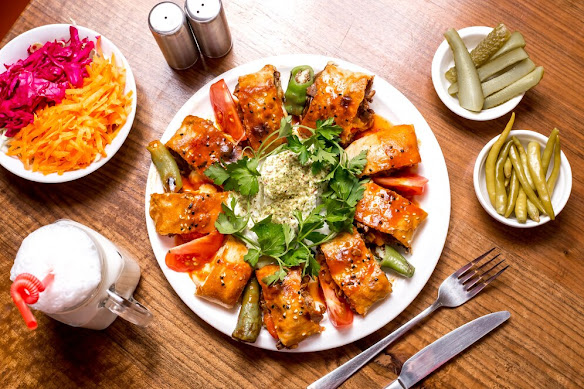A Culinary Expedition through Lebanese Delicacies
Lebanese cuisines are a symphony of flavors, a tapestry woven with tradition, and a celebration of communal dining. In this culinary exploration, we venture into the heart of Lebanese Cuisines, discovering the allure and cultural significance of three iconic dishes—Lebanese Hummus Recipe, Kafta Kabobs, and Makdous.
Lebanese Hummus: A Culinary Ambassador of Hospitality
Beyond being a mere dish, Lebanese Hummus embodies the spirit of Lebanese hospitality. This velvety blend of chickpeas, tahini, and aromatic spices serves as a welcoming ambassador on Lebanese tables. The preparation and presentation of hummus are deeply rooted in cultural practices, symbolizing the warmth and generosity that characterize Lebanese gatherings. The shared enjoyment of this humble dip is a ritual that transcends culinary boundaries, connecting people through a love for authentic, communal dining experiences.
Lebanese Kafta Kabobs: Culinary Artistry on Skewers
Kafta Kabobs showcase the artistry embedded in Lebanese culinary traditions. Ground meat, meticulously seasoned with a blend of spices, is molded onto skewers and grilled to perfection. This dish is not just a feast for the taste buds but a visual spectacle, an embodiment of the meticulous care put into every element. The communal act of grilling Lebanese Kafta Kabobs adds an extra layer of social significance, as friends and family gather around to share in the delight of this grilled masterpiece. Through Kafta Kabobs, Lebanese culture encourages the appreciation of the culinary arts and the joy of shared meals.
Lebanese Makdous: Preserving Tradition and Flavor
Makdous, the pickled eggplant delicacy, represents the art of preserving tradition and flavor. The careful process of marinating baby eggplants in a concoction of spices, nuts, and olive oil not only results in a tangy delight but also showcases the Lebanese penchant for transforming simple ingredients into culinary marvels.Lebanese Makdous is more than just a dish; it is a testament to the resourcefulness of Lebanese kitchens, preserving the bounty of the season to be enjoyed long after harvest. This practice underscores the connection between food and cultural heritage, as each jar of Makdous carries the essence of Lebanese traditions.
Conclusion: The Essence of Lebanese Culinary Heritage
In the trio of Lebanese Hummus recipe, Kafta Kabobs, and Makdous, we discover more than just recipes; we encounter a cultural narrative passed down through generations. Each dish tells a story of shared meals, cherished traditions, and the artistry embedded in Lebanese kitchens. Beyond the delectable flavors, these dishes symbolize the unity of family and friends, the warmth of hospitality, and the preservation of culinary heritage. As we savor the essence of Lebanese cuisine, we embark on a journey through time, appreciating the rich tapestry of flavors that define this remarkable culinary heritage.



Comments
Post a Comment